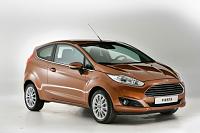Welcome to the Auto Repair Manuals.
New platform family for Ford
4 stars based on
1 reviews
-
 New platform family for Ford
New platform family for Ford

Similar Threads
-
By Auto News in forum AutoGuide
Replies: 0
Last Post: 29.01.2014, 02:40
-
By Auto News in forum Avtomir - miscellaneous
Replies: 0
Last Post: 29.01.2014, 02:10
-
By Auto News in forum News
Replies: 0
Last Post: 13.02.2013, 20:21
-
By Auto News in forum News
Replies: 0
Last Post: 21.11.2012, 16:12
-
By Road&Track in forum News
Replies: 0
Last Post: 26.02.2011, 01:50
Tags for this Thread



 LinkBack URL
LinkBack URL About LinkBacks
About LinkBacks
